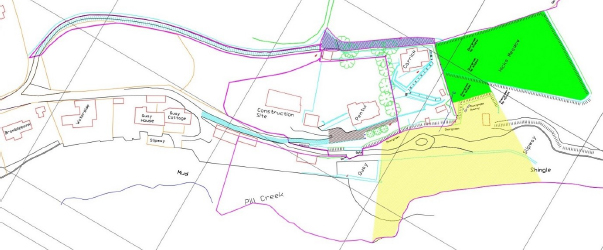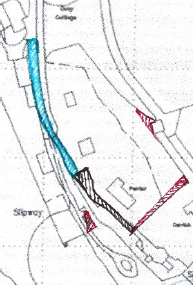Maurice Edward Henwood v Peter Thomas Galton Copeland
| Jurisdiction | England & Wales |
| Judge | Paul Matthews |
| Judgment Date | 27 March 2023 |
| Neutral Citation | [2023] EWHC 598 (Ch) |
| Docket Number | Case No: PT-2021-BRS-000054 Case No: PT-2021-BRS-000060 |
| Court | Chancery Division |
and
[2023] EWHC 598 (Ch)
HHJ Paul Matthews
(sitting as a Judge of the High Court)
Case No: PT-2021-BRS-000054
Case No: PT-2021-BRS-000059
Case No: PT-2021-BRS-000060
IN THE HIGH COURT OF JUSTICE
BUSINESS AND PROPERTY COURTS IN BRISTOL
PROPERTY, TRUSTS AND PROBATE LIST (ChD)
Bristol Civil Justice Centre
2 Redcliff Street, Bristol, BS1 6GR
Simon Williams (instructed by Direct Access) for the Claimant
Jay Jagasia (instructed by Ashfords LLP) for the Defendants
Hearing dates: 18 – 26 October 2022
Approved Judgment
I direct that pursuant to CPR PD 39A para 6.1 no official shorthand note shall be taken of this Judgment and that copies of this version as handed down may be treated as authentic.
This judgment will be handed down by the Judge remotely by circulation to the parties or representatives by email and release to The National Archives. The date and time for hand-down is deemed to be 12 noon on 27 March 2023
INTRODUCTION
This is my judgment on the trial of three claims concerning the extent of, and rights pertaining to, a residential property known as Carrick, built by the side of Pill Creek at Feock, south of Truro in Cornwall. The events with which we are concerned go back many years, but the property became registered land only on 2 October 2013. The claimant in each of the three claims is the owner of Carrick, Mr Maurice Edward (‘Ted’) Henwood. He and his late first wife bought the (unregistered) title in 1984. Each of the three claims relates to separate parcels of land claimed by Mr Henwood to form part of Carrick, but whose owners, on paper at least, are the several defendants. Originally the defendants in claim 000060 were two cousins by the name of Edward ffrench-Constant and Charles ffrench-Constant. However, they sold and transferred their interest in the land concerned to the defendants in claim 000059, Mr Alan and Dr Susan McGaw, who live next door to Carrick in a property called Pentui. The result is that the McGaws are now defendants in both claim 000059 and claim 000060. The defendants in claim 000054 are Mr Peter and Mrs Janet Copeland, who live not far away. (From now on, for convenience I shall refer simply to claims 54, 59 and 60.)
The land in dispute
The plan below (plan 1), drawn by the joint expert Mr Fassam from his recent survey, shows the various parcels in dispute. The top of the plan faces northeast, and the bottom south-west. Carrick lies to the right of the centre of the plan, above the land coloured yellow and to the left of the land coloured green. The extent of the registered title for Carrick (CL301145) is shown in a later plan. What is depicted on the plan with red boundary lines is what is currently found on the ground. It consists of a large rectangular shape with a “dog-leg” extension at one corner. The property called Pentui lies to the left of Carrick, at the centre of the plan. Title to it was first registered (under title number CL187464) on 7 October 2002. Again, the registered plan is shown later. Next, there is the land coloured two shades of blue, at the top of the plan, in two distinct parts. The long thin strip on the left, running (almost) from the public highway at the very left of the plan to the turning circle outside Carrick's modern garage, is referred to as “the Driveway”. The garage is built largely on the “dog-leg” extension to Carrick, but it encroaches on to land forming the extension of the Driveway. This is known as the Strip, and on the plan it is hatched (slightly darker) blue. The level of the land falls sharply away between the Strip and Pill Creek below.
PLAN 1

At the bottom of the plan is Pill Creek, where boats are moored, with the sea out to the right. Further up the plan, where the water meets the land, there is a concrete structure marked “Quay” on the plan, and known as the Upper Quay. That is not in contention. Further down the waterline there is land, including foreshore, with a further landing area, marked “Slipway”, and known as the Lower Quay, or “Land south of Carrick” (though I use the former expression). There is a gated but unmetalled track (“the Lower Track”) which runs from the Lower Quay, up past the Upper Quay, until it joins the metalled track (light blue) that runs from higher up to the public highway, Pill Lane. That metalled track (“the Upper Track”) runs across the bottom of both Pentui and Carrick to an old garage close to the registered boundary of Carrick. The area around the Lower Quay is coloured yellow. The land coloured green, which is contiguous at one edge with the yellow land, is called Hick's Meadow.
The three claims
I will have to go further into the details of the various claims made later on in this judgment. However, for present purposes I will merely summarise the three separate pieces of litigation, as follows. Claim 54 concerns claims by Mr Henwood against the Copelands to ownership of the Lower Quay land (coloured yellow), to Hick's Meadow (coloured green) and to the Strip (coloured hatched blue). The Copelands are the registered proprietors of all three, but Mr Henwood claims a possessory title to them, and seeks an appropriate alteration of the land register.
Claim 59 concerns the boundaries between Carrick and the neighbouring residential property, Pentui, owned by the McGaws. Plan 2 (below) is the plan attached to the particulars of claim, and shows the approximate areas of dispute. There is first of all an issue about the main boundary between these two properties running up from the lower track to the “dog-leg” extension. Mr Henwood says the fence has been moved by the McGaws about 3 metres into Carrick. Secondly, he says that the boundary around the modern garage at the end of the “dog-leg” and abutting the Strip has been wrongly recorded, to Carrick's disadvantage. Thirdly, he says that a small part of the unmetalled track leading from Upper Track to the Lower Quay has been registered as part of Pentui when in fact it should not have been. Fourthly, he says that the land register should record (i) the obligation of the owners of Pentui to contribute to the maintenance of the metalled track which leads from the public highway to Pentui, and which he says belongs to him, and (ii) his right of way over that metalled track through Pentui to Carrick. In closing submissions, the claimant said that he did not press his claims against the defendants in respect of the third and fourth matters. However, they were argued, and in case it assists matters for the future I think I should state my views in relation to them.
PLAN 2

Claim 60 concerns the ownership of the track leading from the public highway up behind Pentui and Carrick to meet the Strip just where Carrick's modern garage is built. As I have said, this is referred to as the Driveway, and is shown coloured blue on plan 1 above. There are conveyancing documents apparently showing that (i) members of the Copeland family transferred this land to the ffrench-Constants in 2004 (when the title was first registered), and that (ii) they in turn transferred it to the McGaws on 16 June 2021 (about two weeks after the claim form was issued against the ffrench-Constants, leading to its subsequent amendment). Mr Henwood however claims to have obtained a possessory title.
It will be seen that this litigation concerns a number of what are essentially boundary disputes between neighbours, onto which have been grafted allegations and counter-allegations of trespass and nuisance. I have no doubt that, for most if not all of those involved, it has turned living in an idyllic part of the country into an incubus. It is one of the worst kinds of litigation, because, although the acts complained of may be comparatively trivial in themselves, they may strike at the heart of what we regard as our home, where we believe we are safest. Consequently, trivial acts may cause great offence, and thus raise the temperature, causing a vicious circle of recrimination and retaliation. The parties sensibly concluded an agreement in 2021 to the effect that the only use of the disputed land would be for the purposes of access. As I said at the end of hearing the live evidence, I am grateful for the dignified way in which all parties conducted themselves during the trial. I wish other litigants would do the same.
DECISION-MAKING
Although the lawyers involved will know this, it may help the parties if I briefly explain how English judges decide civil cases like this. This is what I said about the process in a recent case, Batt v Boswell [2022] EWHC 649 (Ch):
“9. Where there is an issue in dispute between the parties in a civil case, one party or the other will bear the burden of proving it. In general, the person who asserts something bears the burden of proving it. … The significance of who bears the burden of proof in civil litigation is this. If the person who bears the burden of proof of a particular matter satisfies the court, after considering the evidence that has been placed before the court, that something happened, then, for the purposes of deciding the case, it did happen. But if that person does not so satisfy the court, then for those purposes it did not happen. The position is binary. There is no room for ‘maybe’.
10. Next there is the question of the standard of proof. Civil judges do not find facts on the basis of what is scientifically certain, nor even of what is beyond reasonable doubt. Instead, they find facts on the basis of what is more likely than not to have happened, the so-called “balance of probabilities”. And it is the judge, and no-one else, who makes that (objective) evaluative decision. Self-evidently,...
To continue reading
Request your trial
